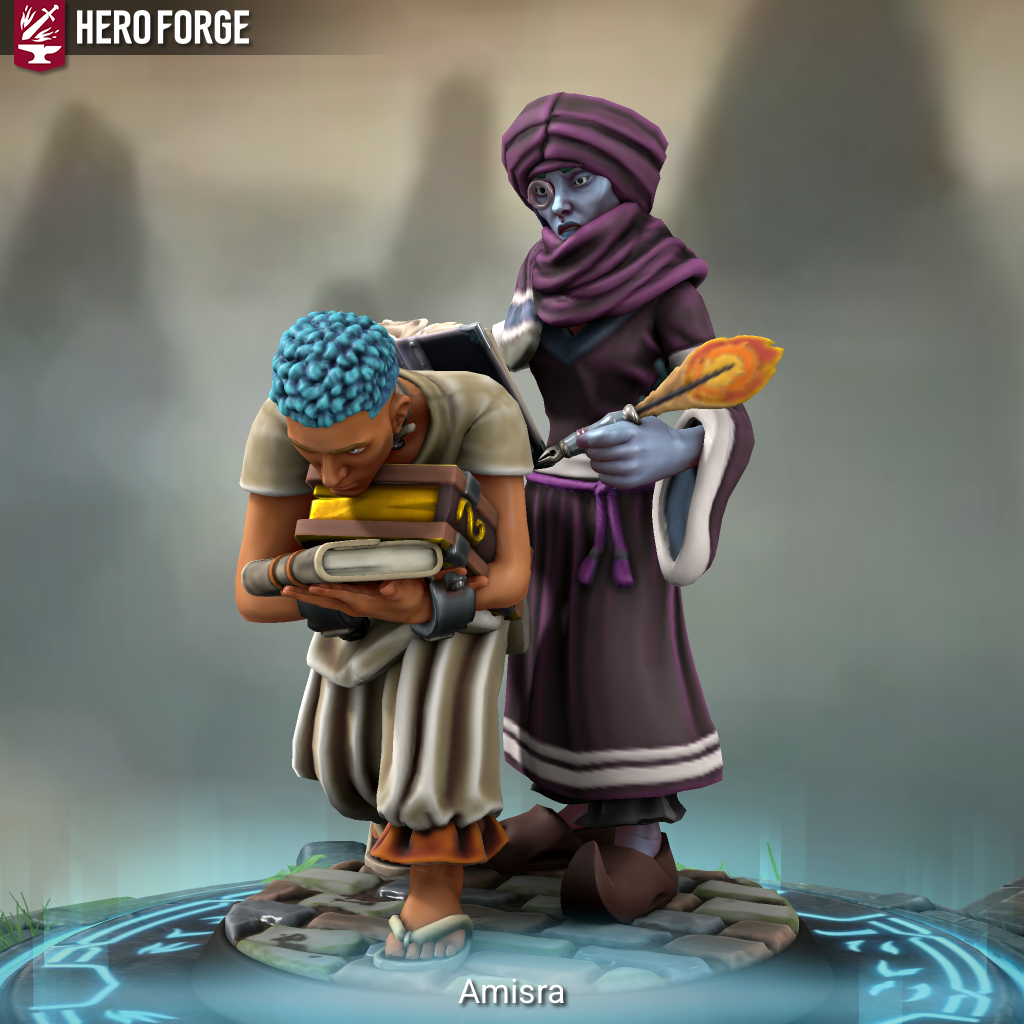priests and priestesses
Career
Qualifications

Career Progression
Payment & Reimbursement

Perception
Purpose
Social Status
Few people dare harm a priest or priestess in full vestments, lest they invoke the wrath of the Nine. I have spent decades traversing the Border Baronies and never ran afoul of brigands once. Priests and priestesses often have immunity to travel freely even in war zones which is why warring sides often use priests to deliver messages to each other and act as middlemen for establishing armistices and peace treaty. A priest or priestess accused of a crime can often bypass feudal justice in favor of eccleiastical courts, though ecclesiastical courts are very harsh to any priest or priestess who makes their order look bad. Clerical immunity has limits. If you engage politics, you are going to going to make enemies, and you can't hide behind your vestments to avoid reprisals. Doubly so for priests who dabble in violent adventures or warfare. Unfortunately, the privileged status of the greater priesthood has been gradually eroding over the past few centuries as more and more priests opt to play in politics or warfare. Each time this happens, the participants not only destroy their own status, but they weaken the status of all priests and priestesses in Scarterra who wish to stay out of politics. We who hold the Compact are largely immune from this fallout...thus far. I have been fortunate over my long life, but I change on the horizon. I fear the next generation will be more vulnerable."Clergy in general, and priests in particular essentially exist as a separate social class. Generally, the priestly class is considered to be socially below hereditary nobles and above commoners. Social status is not always the same as wealth. Most priests live fairly modestly. But we enjoy a level of respect from nearly every demographic. Priests and priestesses can expect hospitality almost anywhere.
Demographics
Theurgist Priests
A theurgist who can channel a portion of the power from one or more of the Nine in order to enact controllable miracles or divine spell-casting. Theurgy is not required in order to lead a religious ceremony. Most priests and priestesses are not theurgists.Reputable scholars estimate that the number of theurgists in the genera population is somewhere between 1 in 200 people and and 1 in 300 people. Among priests and priestesses, roughly 1 in 5 people are theurgists. I joined the Guardians of Valor expecting to spend my days serving Hallisan presiding over basic rituals, pushing piles of scrolls, and mixing simple herbal remedies. This was not Hallisan's plan for me. When my priestly training was nearly completed, I manifested theurgy. Much to my parents' chagrin, I manifested powerful combat theurgy. I was and am ordained as a full priestess of Hallisan, but I spend very little of my time doing priestly duties. I am mostly sent on dangerous quests instead, so I'm usually wearing my armor rather than wearing my vestments.""A priestess need only know the proper liturgy to properly honor the Nine. Being able to cast theurgy is not a requirement. A theurgist needs piety and the blessing of the Nine. Knowing all the formal liturgy is not required. Most priests are not theurgists. Most theurgists are not priests. Because pulling double duty is not necessary to serve the Nine. That said, it's not unusual for theurgists and priests to be one and the same. It is difficult to take an accurate consensus of how many theurgists exist.
Some self-anointed are actively opposed to the strictures of organized religion. Others are not opposed to organized religion in general but they prefer to exist the system anyway. But a lot of self-anointed desire to join the temples formally. If a self-anointed theurgist wants to be a priest, the temple leaders will generally make it very easy for him, waving most application trials and accelerating their education. After all, they already have a clear and obvious sign of their deity's approval, and most temples are happy to take all the theurgists they can get."I am not a theurgist, and I don't need theurgy to serve the Green Lord, Korus. If you allow me to be immodest, my accumulated wisdom and people skills is more than adequate to allow me to discharge my priestly duties. I've met a lot of theurgists from a wide variety of backgrounds. A majority arise from clergy in training. Some manifest their theurgy later in their ecclesiastical careers. The blessings of the Nine are not limited to those who are formally trained A large minority of theurgists arise from the general population of lay people. The so called "self-anointed".
History
We have far greater knowledge of the priests and priestesses of the Second Age due to priceless books and scrolls surviving in various in isolated corners of Scarterra. A lot of books and records were destroyed during theSecond Unmaking and a lot of oral lore was lost when thousands of priests and priestesses died. A lot of religious ceremonies traditions had to be reinvented from scratch. While some records of religious rituals from the Second Age survived into the Third Age, copies and translations of these records were not widely available until the end of the Red Era The formal names and faction nicknames differed, but each of the Nine had their own greater priesthood with various splinter groups and factions much like today. The Cult of the Compact claims to have the deepest roots in the religious traditions of yesteryear, and they are right. But even they have changed a lot over the millennia...just don't say that to their faces."-Akeem of Magicland, professor Emeritus of History"We don't know much about priests in the First Age. Enough records survived that we know that many dragons served as priests and priestesses and that most of the thurekal had some version of their own priests. Sadly, we only know the barest details of their ancient rituals to worship the Nine Most of the dragons' worship rituals seemed to have been performed in the sky, which almost by definition means the dragons did not perform joint worship rituals with the other First Age races very often since most of them couldn't fly.
We of Kahdisteria have the ancient wisdom gifted to us directly by the Dark Mother, Greymoria herself. Even our rituals to the lesser members of the Nine is unparalleled, though I would say imperial elves are close to us in that regard, at least with the other eight deities."-Amisra, Chief Archivist of the City of Light"For all his supposed academic integrity, Akeem will never say anything remotely positive about any elf, especially a Kahdisterian elf. All elves have a purer and more accurate ancient record of wisdom that puts those of humans to shame. Even the primitive wood elves have more sophisticated and timeless ritual knowledge than the most learned and history minded humans, which I must reluctantly credit to be Khemarok humans.
Operations
Workplace
Provided Services


















I can see why this is your favorite article so far for camp. The depth you give both narratively and informatively is excellent, I not only follow the word, I can follow the concepts and though I am sure there is a great deal more I could learn from following and reading all the various linked additional material, I also can tell the gist, enough to passable understand the importance of this profession, these individuals and their various types and the differences in form and function between the various faiths and how they go about the task of being....priestly based upon the religion and deity are in the broadest of strokes, made clear. Combining that with the additional resources and a strong narrative flair, with your quotes and the various sections you wrote more narrative and less hard focused on being simply informative also helps the article flow well, making it a great reading experience. It adds pace, a tempo to it if you will, and the way you've broken up those segments of leaning more informational and then more narrative, back and forth, keeps the reader engaged (or at least it does for me) An excellent article already, and if you intend to tinker with it on occasion as SC continues I can't wait to see the end of camp version :)
Oh and most definitely a worthy addition to my growing collection. Many thanks for your contribution :)